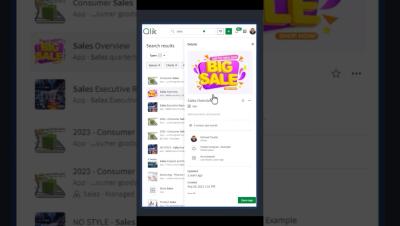Systems | Development | Analytics | API | Testing
Demo
Unleash the power of your data models
Looking to light up your business data? Learn how ThoughtSpot helped Deputy unlock the power of their data models created on dbt by transforming their data culture from rigid, ticket based to more flexible, and self-serve led.
Real-Time Action: Operational Efficiency with Cloudera Data-in-Motion
Experience operational efficiency with Cloudera Data-in-Motion! Capture, process, and deliver diverse data formats in real-time for proactive monitoring. Unify critical systems seamlessly.
Introduction to Ozone on Cloudera Data Platform
When considering whether Ozone is the right fit for your company, view it from several different angles. You can look at it from the perspective of Lower TCO, or reducing the carbon footprint of your Data Center. Other things to consider are how much your data is increasing and at what rate, and if you have enough hardware to cover that growth.
What is the Event Sourcing Pattern? | Designing Event-Driven Microservices
Event Sourcing is a pattern of storing an object's state as a series of events. Each time the object is updated a new event is written to an append-only log. When the object is loaded from the database, the events are replayed in order, reapplying the necessary changes. The benefit of this approach is that it stores a full history of the object. This can be valuable for debugging, auditing, building new models, and a variety of other situations. It is also a technique that can be used to solve the dual-write problem when working with event-driven architectures.
The Correlation Between Data Governance and Quality AI
What is the role of data governance in cybersecurity? How do bad developer behaviors affect data quality? How will generative AI impact data management and security? This week, we revisit the Developers Behaving Badly Report with Lauren Maffeo, Senior Service Designer at Steampunk!
WSO2 APK's Distributed Tracing - Mastering API Efficiency
Uncover the power of WSO2 APK's Distributed Tracing capabilities in our latest screencast! Dive into the world of seamless API management with insights from popular tracing systems like Jaeger, Zipkin, Azure Application Insights, and OTLP gRPC. Learn the why and how of configuring distributed tracing in APK, enabling you to diagnose and resolve performance issues, errors, and exceptions efficiently.
Nuclio Demo
Nuclio is a high-performance serverless framework focused on data, I/O, and compute intensive workloads. It is well integrated with popular data science tools, such as Jupyter and Kubeflow; supports a variety of data and streaming sources; and supports execution over CPUs and GPUs. The Nuclio project began in 2017 and is constantly and rapidly evolving; many start-ups and enterprises are now using Nuclio in production. In this video, Tomer takes you through a quick demo of Nuclio, triggering functions both from the UI and the CLI.
#shorts - New and Improved Search In Qlik Cloud Analytics Hub
There is now an updated search experience for finding datasets, analytics application, and ML models running on Qlik Cloud tenants so that users can access insights quickly and easily.
What is the Transactional Outbox Pattern? | Designing Event-Driven Microservices
The transactional outbox pattern leverages database transactions to update a microservice's state and an outbox table. Events in the outbox will be sent to an external messaging platform such as Apache Kafka. This technique is used to overcome the dual-write problem which occurs when you have to write data to two separate systems such as a database and Apache Kafka. The database transactions can be used to ensure atomic writes between the two tables. From there, a separate process can consume the outbox and update the external system as required.











